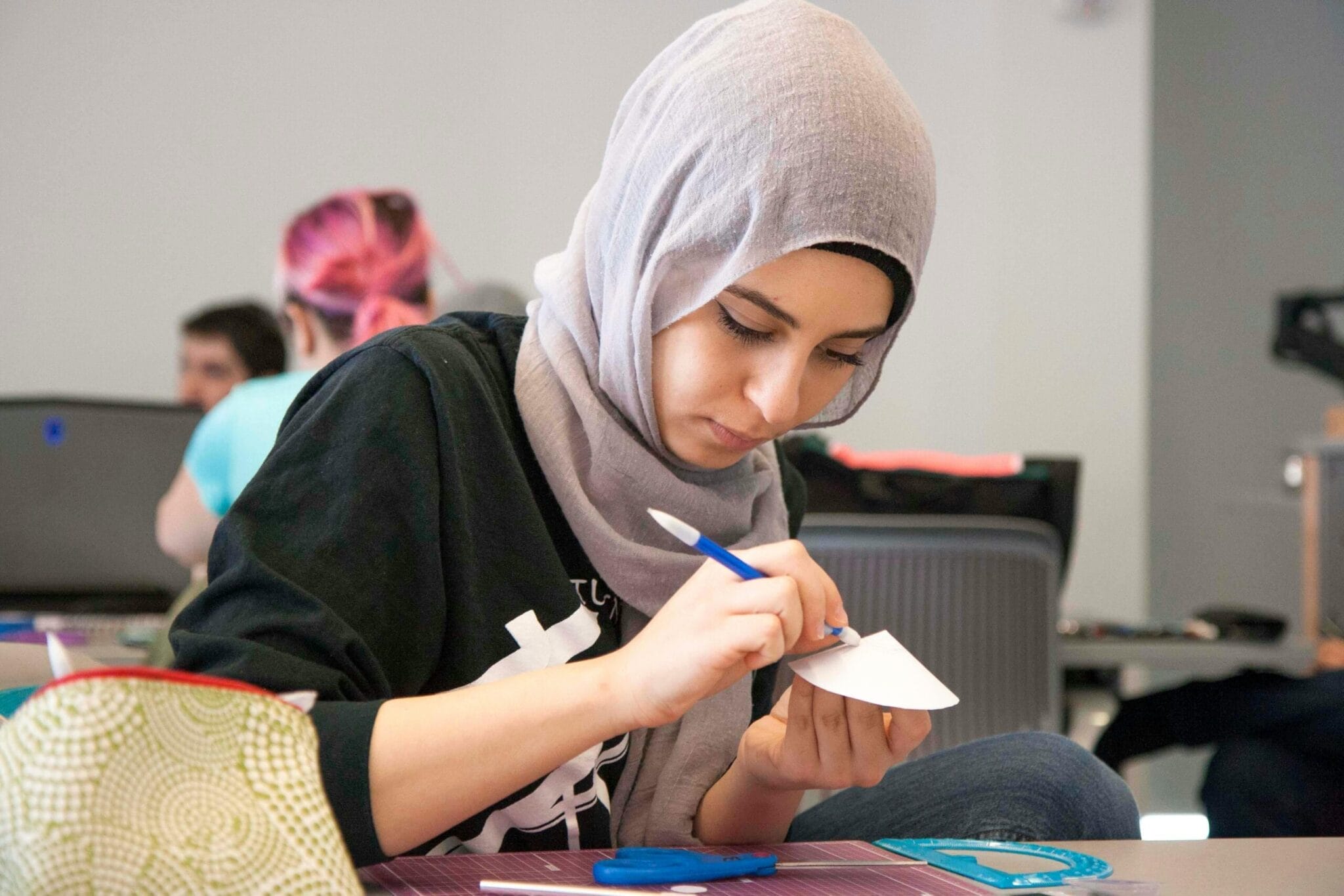Our Journey with Young Leaders
Since Hopelab’s founding more than 20 years ago, we’ve maintained a core connection to the young people we aim to support – first through the co-creation of products and now through our programs and partnerships.

Here's what we've learned about building authentic relationships with young leaders and where those learnings might take us next.
During this two-decade journey, we’ve learned that meaningful change happens when we take a number of small steps to create pathways for youth leadership. While we’re still early in this journey, we’re all in when it comes to sharing power with young people. From reshaping our research approaches to creating platforms where young voices drive our work, we are committed to learning alongside our young partners and moving beyond good intentions to measurable action.
From advisor to decision-maker
Building a community of young change-makers involves fundamentally shifting who holds power within our organizations. While traditional youth advisory boards can be an important step in co-creation, we believe in efforts that share actual decision-making power with young people. This includes strategy and financial responsibilities typically handled by an organization’s leadership. This commitment requires we invite young people to the table and be willing to reimagine and redesign the table entirely.
What does this look like in practice?
For the 2024 Young Innovators in Behavioral Health Awards (YIBH), which recognize young leaders who have made significant contributions to the access, awareness, and advancement of digital mental health care in the U.S., the entire selection committee was made up of young leaders. A mix of former YIBH awardees and young leaders from partner organizations, this committee held the power and responsibility to select a cohort of 30 peers to represent the award in 2024.
Power through funding
These are bold and untraditional ways of thinking, but that doesn’t mean they have to be scary or hard to implement. The Responsible Technology Youth Power Fund (RTYPF) is in its second year of funding youth- and intergenerationally-led organizations and young leaders, who are tasked with defining what responsible technology looks like for their communities while building solutions that shape a more equitable ecosystem. By banding together with 11 other funders, a modest investment from each organization can turn into millions of dollars of support for diverse young leaders. In RTYPF’s case, we’ve collectively raised $4.5 million over two years.
What does this look like in practice?
In its second year, the RTYPF steering committee added five seats to include young leaders from the inaugural cohort. Each young leader received a grant of $75,000, giving them financial resources to remain focused on their business goals. This small step helped refine our grantmaking goals to focus on three specific responsible technology areas: AI, climate activism, and mental health. By reimagining power structures, even in small ways, we elevate young people from participants to leaders, bystanders to co-creators.
Research reimagined
Partnerships with young people also yielded powerful insights in our research. The third installment of our National Survey tracking social media’s role in youth mental health was co-created with young people. To accomplish this, Hopelab’s research team worked with young people who provided direction and input on survey content and interpretation of the results through focus groups and individual interviews. Our priority was to carry out a youth engagement effort that impacted our research and served as a meaningful experience for the young people involved.
The experience was not always smooth sailing, and figuring out how to integrate young people into a traditional research process involved a lot of trial and error. We shared key learnings from the experience in a case study co-created with the Center for Digital Thriving: Demystifying Youth Engaged Research. When there is a genuine desire to include young people in strategy, funding, or decision-making, taking the first step is often the hardest part. With the right support systems and models of ways to replicate effective processes, we hope others will realize the value of working with young people enough to make it a reality.
What does this look like in practice?
Beyond the co-creation and research methods mentioned above, we’ve also launched programs like the Early Career Research Grant. This grant aims to support early career researchers by providing access to our 2024 National Survey data set and funds to accelerate more equitable research on technology and youth mental health and well-being.
Moving forward: Building on what we've learned
Creating pathways to shift systems of power to recognize the value of young people requires more than good intentions – it demands collaboration across sectors and generations. The steps we’ve taken are small but significantly shift how we understand and approach our work in youth mental health. As we lean into our role as connectors and relationship builders, we’ll continue to create opportunities for young people to bring fresh perspectives to our space and to have power in the decisions impacting them and their communities.
Creating pathways to shift systems of power to recognize the value of young people requires more than good intentions – it demands collaboration across sectors and generations.
We also see opportunities to extend youth and intergenerational leadership into our new state and federal policy portfolio. This includes creating evidence-based policies and funding frameworks that reflect young people’s lived experiences and prioritize youth co-creation. Through this strategy, we see an opportunity to advance policies that align with our understanding of adolescent brain development and well-being assets that will give young Brown, Black, and Queer leaders a way to step into their power.
Explore Our Programs
Hopelab centers youth voice, translates science, and accelerates innovation to improve the mental health of Black, Brown, and Queer young people.













